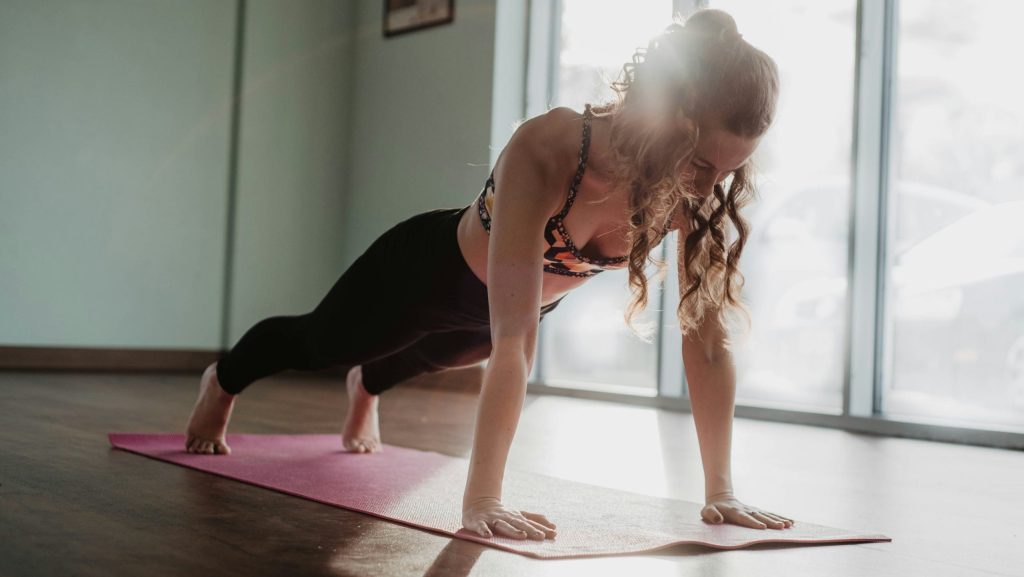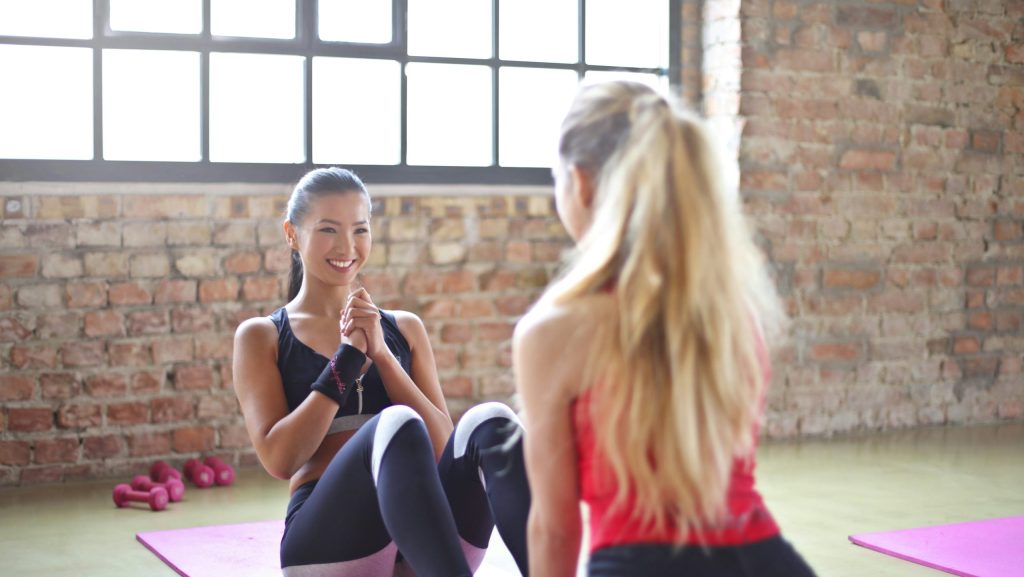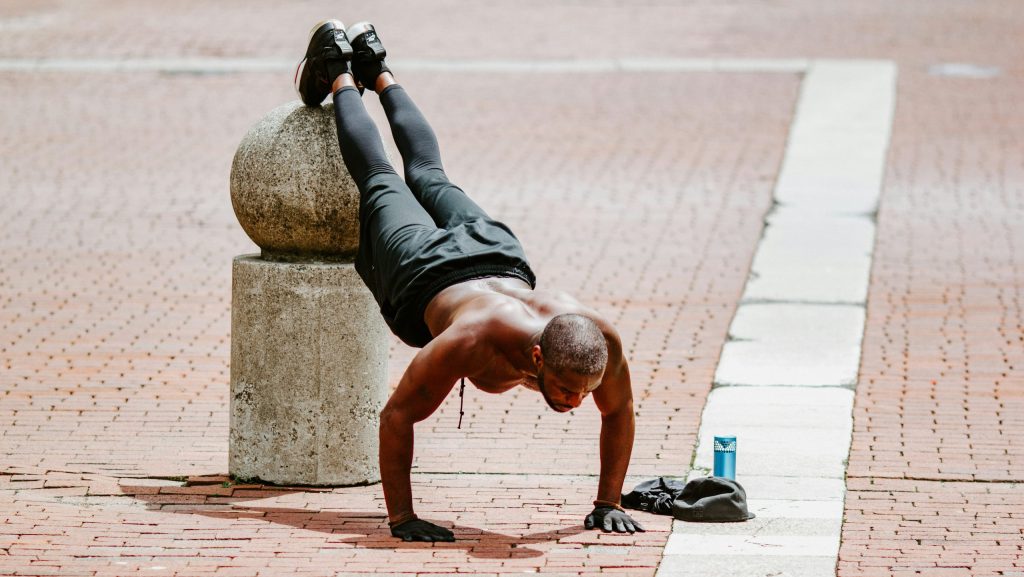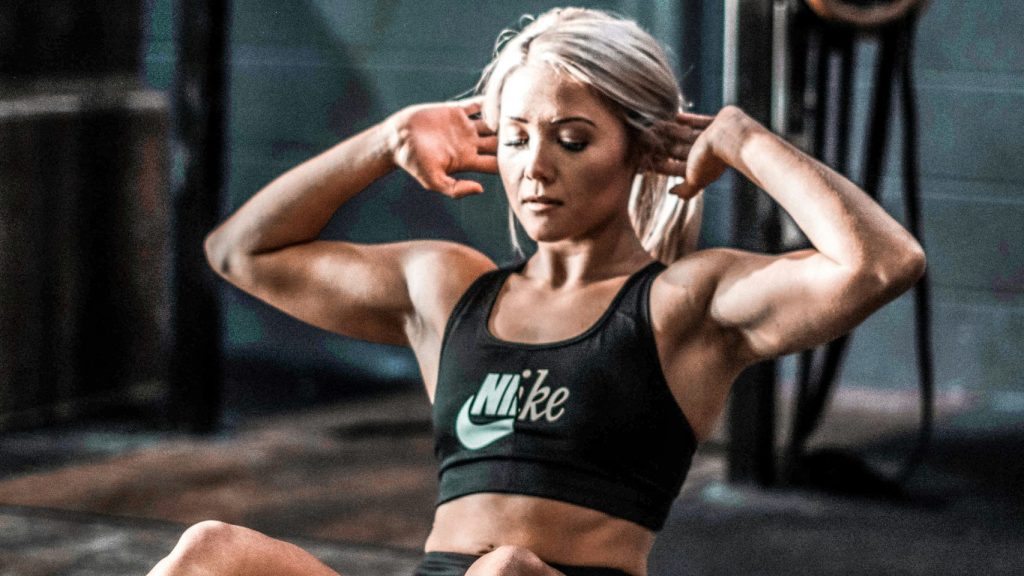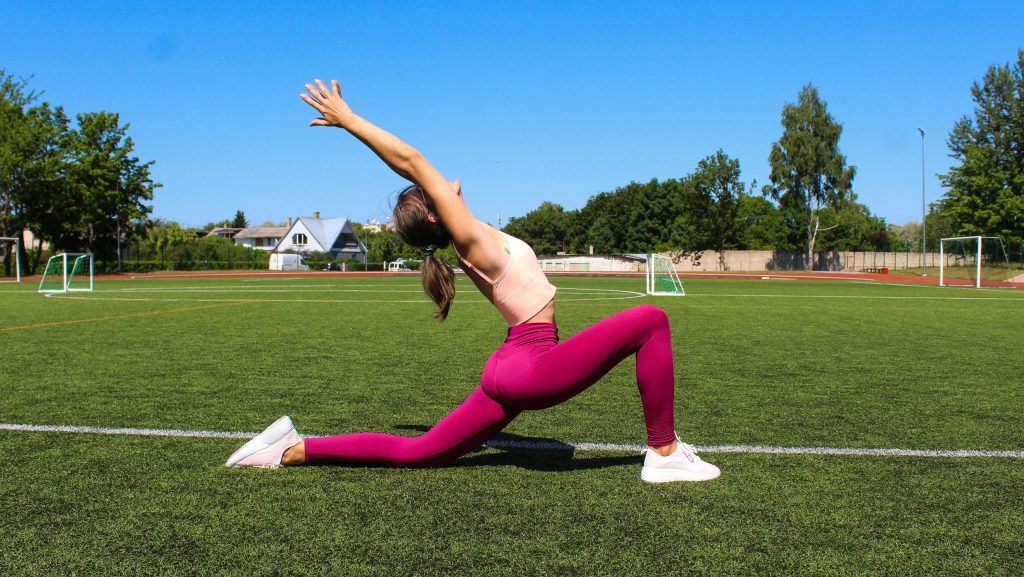Fitness trends may rapidly change, yet the effectiveness of strength training without equipment remains constant. This method, known as zero-equipment strength training, leverages one’s body weight and gravity to provide a comprehensive workout. It proves that expensive equipment or gym memberships are not prerequisites for achieving physical health and strength.
“Bodyweight exercises can improve flexibility, increase muscle strength, and reduce the risk of injury, making them a cornerstone of zero-equipment strength training.”
Zero-equipment strength training is characterized by its adaptability and availability to a wide audience. It offers an efficient way for beginners to start their fitness routine and for those looking to diversify their existing regimen without additional financial investment. By focusing on bodyweight exercises, individuals can pursue improvements in strength, flexibility, and cardiovascular health from their homes.
Main Topics Covered:
- Introduction to Zero-Equipment Fitness: A guide on the benefits of bodyweight exercises for physical health.
- Core Strength Building Fundamentals: The role of core stability and exercises in overall fitness.
- Upper Body Workouts without Weights: Methods to develop upper body strength using bodyweight exercises.
- Lower Body Strength Exercises: Techniques for improving lower body strength through fundamental movements.
- Designing Your Zero-Equipment Routine: Creating an effective workout schedule tailored to individual fitness goals.
Starting a fitness program without equipment focuses on exercises but also includes adopting a perspective that one’s body is a sufficient tool for building strength and wellness. This article aims to equip beginners with necessary information to establish a solid foundation in fitness, underscoring that effective equipment for achieving physical health goals includes the body itself.
By detailing the principles of zero-equipment strength training, this guide intends to provide readers with the knowledge to efficiently use their body weight for exercise. The objective is to enable individuals to navigate their fitness journey confidently, understanding that achieving health and strength is accessible and achievable without specialized equipment.
Introduction to Zero-Equipment Fitness
Zero-equipment fitness utilizes bodyweight exercises to build strength, flexibility, and improve overall health. This approach to physical wellness is accessible to all, providing an effective method to achieve fitness goals without the need for gym equipment.
Benefits of Bodyweight Training
Bodyweight training is essential for developing strength and flexibility using one’s own body weight for resistance. This method is highly adaptable, suitable for various environments, including homes and parks. It emphasizes core strength and stability, which are vital for reducing the risk of injuries and improving physical performance. Bodyweight exercises are scalable, making them effective for both beginners and advanced individuals.
“Studies show that engaging in bodyweight exercises can improve muscle strength by up to 58% over an 8-week period, underscoring their effectiveness for individuals at any fitness level.”
Starting Your Fitness Journey
Initiating a fitness routine with bodyweight exercises involves setting realistic goals, such as enhancing overall health, boosting strength, or increasing flexibility. It’s crucial to establish a varied routine that targets different muscle groups, ensuring consistent practice for optimal results. Emphasizing proper form in exercises maximizes their effectiveness and minimizes injury risks.
Essential Fitness Principles
A successful fitness regimen without equipment adheres to several key principles:
- Progressive Overload: Increase the intensity of workouts progressively to challenge the body and stimulate muscle growth.
- Balance Between Workout and Recovery: Rest is crucial for muscle repair and growth, highlighting the necessity of incorporating rest days into the routine.
- Variety in Workouts: Different exercises and routines prevent boredom and ensure balanced muscle development.
Zero-equipment fitness offers a practical and inclusive approach to achieving physical health, emphasizing the effectiveness of bodyweight exercises. By understanding the benefits of this training method, starting with clear objectives, and applying critical fitness principles, individuals can successfully pursue their health and fitness goals. This method supports a comprehensive approach to fitness, encouraging further exploration into specific exercises and routines that can be performed in any setting.
Core Strength Building Fundamentals
Core strength is crucial for overall fitness, affecting posture, movement stability, and injury prevention. Strengthening the core through targeted exercises improves balance, supports a healthy posture, and reduces the risk of injury, particularly in the lower back.
“A study found that individuals with stronger core muscles have a lower risk of injury, particularly in the lower back, highlighting the core’s role in overall body mechanics and injury prevention.”
Beginner-Friendly Core Workouts
Effective core training begins with exercises that are accessible to beginners and can be performed without equipment. Key exercises include:
| Exercise | Focus Area | Benefit |
|---|---|---|
| Planks | Stability | Enhances core strength and reduces back pain |
| Bird-Dogs | Coordination | Improves lower back and abdominal strength |
| Lying Leg Raises | Lower Abs | Targets lower abdomen, improving posture |
These exercises lay a foundation for a strong core, emphasizing stability and muscle endurance. They are easily modifiable, allowing for increased difficulty as one’s strength improves.
Progressing with Core Exercises
Progressing core strength involves introducing new challenges to the workout routine. As beginners advance, they should aim to increase the intensity of foundational exercises and explore new exercises to continue developing core strength and stability. This gradual progression ensures continuous improvement and helps avoid plateaus in fitness development.
In summary, core strength is a foundational aspect of fitness that supports various physical activities and daily movements. Starting with basic exercises and progressively increasing the challenge allows individuals to build a strong, stable core. This approach not only enhances physical capabilities but also promotes long-term wellness and prevents injuries.
Upper Body Workouts without Weights
Upper body workouts without weights can significantly improve strength and muscle definition across the chest, arms, and shoulders. These exercises leverage body weight to provide resistance, offering an effective and accessible method for enhancing upper body fitness.
“Regular engagement in upper body exercises like push-ups can increase upper body strength by up to 40% in non-athletes, highlighting the potential of bodyweight workouts.”
Key Exercises for Upper Body
To build upper body strength, several bodyweight exercises target key muscle groups effectively:
- Push-ups: foundational for strengthening the chest, shoulders, and triceps.
- Dips: focus on the triceps and chest, and can be performed using a stable surface.
- Pull-ups and Chin-ups: require a bar but are excellent for targeting the back, biceps, and shoulders.
These exercises form the core of an effective upper body workout regimen, allowing for comprehensive muscle engagement and development.
Form and Technique Tips
Proper form and technique are crucial for the effectiveness of upper body exercises and injury prevention:
- Push-ups: Maintain a straight line from head to heels. Hands should be slightly wider than shoulder-width. Lower the body until the chest nearly touches the floor, then push back up.
- Dips: Use a stable surface at waist height. Keep elbows close to the body and pointed backward. Lower the body until arms are at a 90-degree angle, then push back up.
- Pull-ups/Chin-ups: For chin-ups, grip the bar with hands shoulder-width apart; for pull-ups, grip slightly wider. Pull up until the chin passes the bar, then lower with control.
Building Upper Body Strength
Advancing upper body strength involves progressively increasing the challenge of exercises. This can be achieved by modifying hand positions, adding movements, or increasing repetitions. Consistent practice and gradual progression are key to continuous improvement and adaptation, leading to significant gains in strength and muscle definition.
Upper body workouts without weights are highly effective for developing strength and muscle definition. By focusing on key exercises, maintaining proper form, and progressively increasing difficulty, individuals can achieve substantial fitness improvements. This guide provides a comprehensive approach for enhancing upper body strength using bodyweight exercises, encouraging consistent practice and exploration of more advanced techniques for optimal results.
Lower Body Strength Exercises
Lower body strength is fundamental to comprehensive fitness, underpinning balance, mobility, and overall endurance. Targeted exercises can fortify the legs and glutes, enhancing physical performance and injury resilience. This section outlines effective lower body workouts achievable with bodyweight alone, suitable for any setting.
“Performing squats with proper form can activate over 200 muscles in the body, making it one of the most comprehensive exercises for lower body strength.”
Essential Lower Body Movements
For robust lower body strength, incorporate squats, lunges, and glute bridges into your routine. These exercises target crucial muscle groups, establishing a base for enhanced strength and muscular endurance:
- Squats engage the quadriceps, hamstrings, and glutes, crucial for leg strength and knee stability.
- Lunges improve leg and glute strength while enhancing balance and coordination.
- Glute Bridges focus on the glutes and hamstrings, supporting lower back health.
Adapting these exercises to increase difficulty aids in continuous fitness progression.
Incorporating Balance and Stability
Balance and stability exercises are vital for a balanced fitness approach, improving functional strength and preventing injuries:
| Exercise | Target Area | Benefit |
|---|---|---|
| Single-leg Squats | Quads, Glutes | Enhances balance, leg strength, and core stability |
| Deadlifts | Lower Back, Glutes, Hamstrings | Strengthens without equipment, mimicking weightlifting |
Advancing Lower Body Fitness
Progressing in lower body strength entails increasing the challenge of exercises. Integrating plyometric movements such as jump squats or lunges introduces explosive strength and endurance elements, promoting muscle adaptation and growth:
- Jump Squats incorporate a cardiovascular and power component, improving agility.
- Lunge Jumps elevate heart rate and muscle endurance, offering dynamic lower body conditioning.
Such modifications foster continuous improvement, ensuring sustained advancement in lower body strength and fitness.
Lower body workouts centered on bodyweight exercises are key to building strength and enhancing muscle definition in the legs and glutes. Emphasizing key movements, proper form, and progressive challenges enables significant fitness achievements. This guide provides a thorough overview of lower body exercise strategies, encouraging consistent engagement and progression for optimal physical wellness.
Designing Your Zero-Equipment Routine
Designing an effective fitness routine without gym equipment requires a strategic approach to exercise selection, scheduling, and goal setting. This method enables individuals to achieve comprehensive fitness improvements through a structured, adaptable workout plan executed in any convenient space.
Creating a Balanced Workout Plan
A well-rounded home workout plan integrates various exercise types to cover all fitness components:
Cardiovascular Activities: Essential for heart health and calorie burning, effective options include:
- Jumping jacks
- High knees
- Burpees
Strength Training Exercises: Fundamental for building muscle and endurance, recommended exercises are:
- Push-ups
- Squats
- Planks
Flexibility Practices: Crucial for enhancing flexibility and aiding recovery, include:
- Hamstring stretches
- Shoulder stretches
- Yoga poses like Downward Dog
Workout Frequency and Rest
Determining the right balance between workout days and rest periods is key to maximizing fitness gains while minimizing the risk of injury.
“Studies have shown that muscles need approximately 48 hours to recover and rebuild after a strength training session, underscoring the importance of rest days in any fitness regimen.”
A typical recommendation is to engage in strength training exercises 2-3 times a week, with rest or active recovery days in between. Cardiovascular activities can vary in frequency based on intensity, while flexibility exercises can be performed daily.
Tracking Progress and Staying Motivated
Monitoring progress and adapting the workout plan based on achievements are crucial for sustained fitness development:
- Setting realistic and specific goals facilitates measurable progress.
- Regular evaluations help acknowledge achievements and identify areas for improvement.
- Adjusting the intensity, volume, or variety of exercises ensures continued challenges and prevents plateaus.
Adhering to these principles encourages consistent advancement in fitness levels, fostering long-term engagement and motivation.
A well-structured zero-equipment workout routine empowers individuals to efficiently pursue their fitness objectives. By carefully planning exercise types, frequency, and rest, and by diligently tracking progress, it’s possible to enjoy the benefits of a comprehensive fitness program from the comfort of home. This guide provides actionable strategies for creating an effective workout plan, supporting ongoing physical wellness and achievement of fitness goals.
Conclusion: Fitness 0: Zero-Equipment Strength Training
“Fitness 0: Zero-Equipment Strength Training” demonstrates that comprehensive fitness goals are attainable with bodyweight exercises alone. This guide offers a roadmap for individuals at any fitness level to enhance their health and strength, emphasizing the simplicity and effectiveness of bodyweight exercises.
Key Insights
- Accessibility of Bodyweight Training: Starting strength training without traditional gym equipment makes fitness accessible to everyone.
- Importance of Core Strength: Core strength supports overall fitness, enhances functional movement, and reduces the risk of injury.
- Enhancing Upper Body Strength: Scalable bodyweight exercises targeting the arms, chest, and shoulders promote muscle strength and endurance.
- Targeting the Lower Body: Exercises for the legs and glutes improve balance, stability, and muscle building.
- Designing a Personalized Fitness Routine: A balanced workout plan tailored to individual goals and lifestyles is crucial for sustained fitness improvement.
This comprehensive guide underscores the holistic approach to fitness, where strategic exercise selection, consistent progress tracking, and dedication are key to achieving and maintaining optimal health and strength. By integrating workouts that target all major muscle groups, adhering to principles of balance and recovery, and maintaining motivation over time, individuals can achieve significant fitness results.
Embracing the principles outlined in this guide enables individuals to navigate their fitness journey with confidence, achieving remarkable outcomes with nothing but their body weight. The journey to optimal health and strength is ongoing, beginning with the commitment to take action and embrace the possibilities of zero-equipment training.
“Take the first step towards a healthier, stronger you. Begin your zero-equipment strength training journey today, and discover the power of bodyweight exercises in transforming your fitness. Let’s get moving!”
This conclusion emphasizes actionable strategies discussed in the article, encouraging readers to implement these into their fitness routines. It highlights the importance of an integrated approach to fitness, combining effective workouts, progress tracking, and the cultivation of healthy habits for sustained improvement and well-being.

